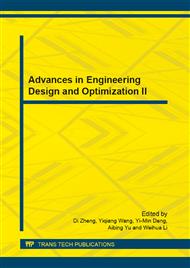p.909
p.913
p.918
p.922
p.926
p.930
p.934
p.938
p.942
Detection of Laser Melting Bionic Stripe Quality on Mould Surface Based on Acoustic Signal
Abstract:
In order to rescue the problems of controlling laser bionic strengthening local stripe of mould surface quality, it is put forward thoughts about the laser bionic local melting stripe of mould surface quality detection based on acoustic signal. Analyzed with the relationship between defocusing distance and acoustic signal characteristic, laser bionic strengthening local stripe quality, the results show that acoustic signal is weakened with the increased absolute value of defocusing distance. As the defocusing distance is 0mm, the role of the laser is primarily ablation and the stripe quality is the worst; the function of laser on the surface materials is too weak to strengthen when the defocusing distance is -4mm; laser on target surface plays its role of strengthening, mainly owing to melting, with defocusing distance of +4mm. Overall tests show that, based on the quantitative detection of acoustic signal characteristic, it could inspect and control the quality of strengthening stripe, and it will realize the overall control of laser bionic strengthening mould surface quality with guiding significance.
Info:
Periodical:
Pages:
926-929
Citation:
Online since:
September 2011
Authors:
Price:
Сopyright:
© 2012 Trans Tech Publications Ltd. All Rights Reserved
Share:
Citation:


